|
|
GIZE, STONEHENGE, CHICHEN ITZA, ETC,ETC: RENNES LE CHATEAU-MARY MAGDALENE-FRANCE
Scegli un’altra bacheca |
|
Rispondi |
Messaggio 1 di 48 di questo argomento |
|
|
|
|
|
Rispondi |
Messaggio 4 di 48 di questo argomento |
|
CROSS POINTS AT RENNES LE CHATEAU
IT IS CALLED
CROIX DE LA SIMON
One will remember that it was at Simon's house where Mary of Bethany, Martha and Lazarus (Lassere?) met with Jesus and where the Mary anointed the feet of Jesus.
These events are featured in the windows at Sainte Marie Madeleine church in Rennes le Chateau.
It is also the theme of the plain text of the Shepherdess parchment.
Brenac is a village just off the road from Quillan to Montsegur. The village was formerly known as Bernacum and is at the foot of the plate of Nebias which encompasses the commune of hamlets comprising of Fauruc, Lasserre, Monsec and Prax. The name Brenac is probably of Gallo-Roman origins. The Chapter of Narbonne holds the title deeds to it in the 9th century and there is mention of the village, as Bernacum, in 870, in the cartulary of St Just. The Chapter of Narbonne (St Just) then equipped the place as a stronghold and this was done by royal approval.
During the Albigensian Crusade, the lord of the castle was the d'Aniort family. During the wars of religion, the castle and church were burned and largely destroyed, but rebuilt afterwards. Cassini's map shows the many mills on the course of valley of Brézilhou. The church and Castle would suffer again during the French Revolution, but unlike others in the area, was not destroyed.
There exists a persistent rumour linking this village with the village of Rennes-le-Chteau which wont go away. Both villages were close to one another and throughout recent times at least, priests from each village would definitely occasionally meet, either socially or officially; indeed Saunière mentions such visits in his diary. However just outside the village are the remains of a small insulated vault (it can be reached by car), which is a Visigothic oratory (shown left) and is listed as under the protection of St Anthony. There are many points, all around Brenac, where this vault could have been built, but from this specific point the village of Rennes-le-Chteau can be clearly seen. There appears to be a natural alignment between these two sites – and seems to suggest some intention on the part of our early ancestors. However there is another site, near Brenac, that has attracted the attention of vandals and has been violated in the hope of discovering the famous treasure of the Razès in that location. No treasure has been found and the site had to be carefully protected from further destruction by treasure hunters.
There was a former priest of Brenac called Capel who was curé in 1793. We know that the priest of Rennes-le-Chteau, Bigou, went to Spain to flee the French Revolution, there is some speculation that the priest of Brenac went with him?
In the early 19th century, the church was in a sorry state. In 1809, Mgr. de Laporte, bishop of Carcassonne, worried about the maintenance of the building. However it would be 1837 before any work was carried out. An entry porch was added and to the left and right, two side chapels were created.
In 1843, beautiful but strange frescoes were added to panels in the ceiling. They have been listed in the Historic buildings inventory since April 9, 1987 (as was the bell dating from 1646). In some ways this church is decorated better than the St Marie Madeleine church in Rennes le Chateau.
The church is under the protection of St Julien and St Basilisse, both saints that lived in the 4th century and were martyrs in Antioch. In the county of the Razès we find the churches of Especel, Magrie and Villar-Saint-Andre also under their patronage. In Brenac, the celebrations in their honour occur on January 19, the day of St Marius, but before, it was the feast of St Germanique. The following day, January 20, masses were said for the dead.
One priest of Brenac is worth special mention, he is François Courtade. Born in 1820, he attended the great seminar of Carcassonne. He was named priest of Brenac on May 10, 1848, where he would remain for the next 40 years – until the time when a young Béranger Saunière came to the priesthood. Born in 1820, he attended the great seminar of Carcassonne. He was named priest of Brenac on May 10, 1848, where he would remain for the next 40 years – until the time when a young Béranger Saunière arrived at Rennes-le-Chateau as curé. He was the great nephew of Felix Armand, who was famous for having made tunnels in the region. François Courtade was also an experienced sculptor and painter, he may well have painted the Mary Magdalene picture shown above. The village still has the statue of former bishop was also an experienced sculptor and painter, he may well have painted the Mary Magdalene picture shown above.
The village still has the statue of former bishop Petrus Amelius, residing on top of the fountain near the church (shown left), inaugurated in 1878 it was sculptured by Courtade.. Petrus Amelius (Pierre Amiel) was a former native of Brenac and he was connected with the Avignon popes and specifically involved in the return of the Holy See to Rome at the time of Gregory XI. Amiel’s career began around 1365 and lasted up to his death in 1401. He was the patriarch of Raden and Alexandria, a position he received in 1386 and which he held until 1391.
Saunière is reported to have consulted Courtade before turning his attention to Perillos..
Last but not least it is worth a mention that at the beginning of the 17th century there was yet another enigmatic figure, Polycarpe de la Rivière, who showed a more than normal interest in the history of Brenac. Too strong an interest, it seems, as his work on the history has been censored by the Church authorities.
His prohibited work was written in 1638 and entitled “Histoire de la ville d’Avignon”. What is so strange about the history of this town that it required the intervention of the Vatican. But could it have been something that Amiel, in his privileged position as papal librarian, was also aware of? Amiel was of course part of that history for Polycarpe.
******************
It is reasonable to speculate that a cave exists close to Brenac that has a connection with Mary Magdalene.
Perhaps marked by Simon's Cross.
Careful close scrutiny of the Magdalene frieze under the altar reveals some interesting hypotheses. One of the things that is usually overlooked is the twin pillars either side of The Magdalene that symbolically hold up the Arch and the altar, but remembering the original story of how Saunière supposedly found his parchments in a cracked pillar. What is pretty clear is that no cracked pillars have been found so perhaps the story is allegorical. For indeed the story of a weeping virgin in front of a cracked pillar reading from a book has significant meaning in masonic circles and indeed the black and white chequered flooring of the church and the two pillars seems to reinforce this view. Remember of course that underneath this frieze there used to be the phrase (found also on the parchment):flooring of the church and the two pillars seems to reinforce this view. Remember of course that underneath this frieze there used to be the phrase (found also on the parchment):
JÉSU . MEDÈLA . VULNÉRUM + SPES . UNA . PŒNITENTIUM
PER . MAGDALÀNÆ . LACRYMAS + PECCATA . NOSTRA . DILUAS
"Jesus, cures wounds + hope at the same time pays the penalty,
by Magdalene's tears + dilute our errors."
Note: For some reason this phrase under the altar was destroyed by a vandal in the 1970s, perhaps this interpretation was the reason why.
On the left is the masonic depiction of the weeping virgin (Virgo) holding the sprig of acacia and chalice and reading from an open book, whilst at her back stands father time teasing out the ringlets of her hair. At her feet is the broken pillar of Solomon's Temple.
"Masonry still retains among its emblems one of a woman weeping over a broken column, holding in her hand a branch of acacia, myrtle, or tamarisk, while Time, we are told, stands behind her combing out the ringlets of her hair. We need not repeat the vapid and trivial explanation... given, of this representation of Isis, weeping at Byblos, over the column torn from the palace of the King, that contained the body of Osiris, while Horus, the God of Time, pours ambrosia on her hair."
Illustrious Albert Pike 33°
Morals and Dogma, page 379
"The broken column denotes the untimely death of our Grand Master Hiram Abiff; the beautiful Virgin, weeping, denotes the Temple, unfinished; the book open before her, that his virtues there lie on perpetual record; the sprig of acacia in her right hand, the timely discovery of his body; the urn in her left, that his ashes were there safely deposited to perpetuate the remembrance of so distinguished a character; and Time standing behind her unfolding the ringlets of her hair denotes that time, patience and perseverance will accomplish all things..."
Master Mason Initiation Lecture
Broken Pillar in Arques Cemetery
This broken pillar is on the Samhain/Parilia line
|
|
|
|
Rispondi |
Messaggio 5 di 48 di questo argomento |
|
THE ROCK OF THE MAGDALENE
By CORJAN DE RAAF & ANDREW GOUGH
February 2007
The 600 Lb Gorilla
The legend of Rennes-le-Chteau is fraught with mystery, mistakes and misdirection. The simplest explanation is often the path least chosen, if selected at all. This flies in the face of Occam’s Razor, which stipulates – according to the online encyclopedia Wikipedia – that "one should always choose the simplest explanation of a phenomenon, the one that requires the fewest leaps of logic". In layman’s terms, this translates as always look for the 600 pound gorilla in front of you first before charging into the jungle.
So where is the 600 lb gorilla in the mystery of Rennes-le-Chteau? Actually there might be several, but for a start, how about a tower designed by a priest; father Saunière, called the Tour Magdala, or the Tower of the Magdalene. This spectacular structure defines the village of Rennes-le-Chteau and exhibits several 600 lb gorilla like qualities, such as the following:
-
22 steps lead to a platform that connects the Tour Magdela with the adjoining orangery.
-
22 steps ascend a spiral stair case to the top of the Tour Magdela.
-
22 degrees offset from the window in the Tour Magdela, one’s line of sight is fixed
-
22 is the Feast Day of Saint Mary Magdalene.
-
The Tour Magdal window points unambiguously at a grotto in the distance whose ancient place name is ‘Grotte du Fournet – dite de la Magdeleine’, which translates as ‘The Burial Site of the Mary Magdalene‘ or the Grotto of Mary as we will call it.
-
Magdala refers to Magdalene. Magdala near Gallilee, according to the gospels, was the birthplace of Mary Magdalene. Magdala also means tower in Hebrew (Migdal in Aramic). Hence, a triple meaning.
-
In the Grotto of Mary can be found the remains of what appears to be two ancient burials.

22 steps lead to the platform connecting the Tour Magdela and the Orangery © Andrew Gough

The Tour Magdela: Tower of the Magdalene
Magdala refers to Magdalene. Magdala near Gallilee, according to the gospels, was the birthplace of Mary Magdalene. Magdala also means tower in Hebrew (Migdal in Aramic); hence the Magdela’s triple meaning © Andrew Gough

22 Steps Lead to The Tour Magdela Window which is fixed on the Grotto of Mary © Andrew Gough

The Grotto of Mary – looking back at the Tower of the Magdalene © Andrew Gough
Supporting these gorilla like pillars are other facts and peculiarities, such as:
-
Fixed on the Grotto of Mary is a very distinctive and curious stone platform. This enigmatic structure will be the foundation of much of our analysis in this paper, as it appears to have been portrayed in various works of classical art.
-
The village Priest, Berenger Saunière, built his own Grotto, dedicated to Mary Magdalene, from stones collected near the region pointed to by the Tour Magdela. His grotto, before it was vandalized, pointed directly at the Tour Magdela.
-
Elsewhere, the village church is dedicated to Mary Magdalene.
-
The Church’s statues are repositioned so that the first letter of each spells ‘GRAAL’, French for Grail, when connected in the shape of an ‘M’.
-
The hand of Berenger Saunière is observed within the church in several places, including most notably the Altar Painting that he personally designed. It depicts a grotto with Mary Magdalene staring at an ‘X’ or cross (a sign of concealed esoteric knowledge according to Margaret Starbird, and others).
-
In the Altar Painting Mary Magdalene’s hands are folded in a peculiar, almost swastika like manner. In this instance, they form three X’s; a sign of significant, concealed esoteric knowledge.
-
The Altar Painting seems to depict buildings present in Rennes-le-Chteau in the background.
These gorilla like pillars that seem to shout ‘look here! And so we shall, all the while conscious of the fact that their apparent significance may merely be a product of our over active imagination. The purpose of this essay, whose core arguments have been undergone peer review on both public and private Rennes-le-Chteau Forums, is an attempt to examine a subset of these anomalies in considerable detail and to apply Occams Razor where possible, and to look beyond it where necessary.
In particular, we will explore one strangely overlooked facet of the mystery; the large stone platform that is fixed on the Grotto of Mary. This distinctive, curious and largely ignored stone platform, which we call the Rock of The Magdalene, seems in need of considerable analysis, given its possible significance in the mystery and its apparent representation in classical works of art. Before reviewing each of the classical painters whose works appear to have commemorated this enigmatic structure, let’s take a look at what we call, The Rock of the Magdalene.

The Rock of Magdalene in the foreground: from the Grotto of Mary
with the Tour of the Magdalene in the distance © Andrew Gough

The Rock of the Magdalene; a Profile © Andrew Gough
Magdalene’s Streaming Tears
We start with a review of the area surrounding the Grotto of Mary and the Rock of The Magdalene, which is called the Vallée des Couleurs. Studying the map below we can see that a small stream crosses the valley called Ruisseau de Couleurs.

IGN Map and Aerial photo of the location of the Grotto and the Rock of the Magdalene
Split by thé Ruisseau de Couleurs. © Corjan De Raaf
Corjan, a keen linguist, had historically translated the streams name as Stream of Colours, but has recently begun to consider other alternative translations. Basically, the French have an expression: un RUISSEAU de larmes COULAIT le long de ses joues, meaning the tears streamed down her cheeks. Couleurs, in that respect, could mean ‘the things that run in the sense of tears down your cheeks’. It doesn’t translate particularly well into English but we hope you get the idea: Ruisseau de Couleurs could perhaps have been intended as Stream of Tears a long time ago!
This is relevant because there is a well-known phrase in the whole enigma that speaks of the Magdalena and her tears that wash away our sins. It was once inscribed below the bas relief of Saunière’s altar and it is displayed at the bottom of what we know as the ‘2nd parchment’. The phrase states: JESU MEDELA VULNERUM SPES UNA POENITENTIUM PER MAGDALENAE LACRYMAS PECCATA NOSTRA DILUAS.

Noel Corbu pointing at Mary Magdalene’s strangely crossed fingers.
Below the Bas Relief is the inscription that is identical to the last phrase of the ‘big’ parchment
Saunière allegedly found in his church in July 1887. © Corjan De Raaf
The above phrase is Latin for Jesus, you remedy against our pains and only hope for our repentance, it is thanks to Magdalene’s tears that you wash our sins away. This sentence is pure heresy and must have raised many an eyebrow when it was first put on display. The power to wash away our sins is directly linked to the Magdalene’s tears, rather than to the blood of Jesus or his death on the cross. Peculiar to say the least.
There are more similarities between the bottom of the second parchment and the bas relief. Have a close look at the NOIS sign and the strange scribbling in the middle. When you mirror the image it says SION and displays the cross with a branch below an inversed ‘N’. We believe that the inversed ‘N’ means: attention, there’s a secret here. One of the members on the Back to the Source Forum brought to our attention a similarly inversed ‘N’ in a tree in a famous painting that is often related to Rennes-le-Chateau: Les Bergers d’Arcadie. Over that reversed ‘N’, in the same tree, Poussin painted the same cross, represented with a branch. Would there also be references in art to Mary Magdalene and the big square rock?

Remarkable resemblances between the inversed Priory-of-Sion logo at the bottom of the ‘large parchment’, the tree on the left side of Poussin’s Les Bergers d’Arcadie and the tree-cross (X), admired by Mary Magdalene on Saunière’s altar. © Corjan De Raaf
The Rock of the Magdalene
It has often been hypothesized that there were artists who possessed the secret of Rennes-le-Chateau and preserved this heretical knowledge in their paintings. However, this has never been satisfactorily proved. This discussion is an attempt to review the regions depicted by these artists and examine the possibilities. For instance, whether or not Nicolas Poussin had Rennes-le-Chteau in mind when he painted his ‘Bergers d’Arcadie’ is completely up for speculation. Louis XIV apparently went out of his way to find and purchase the original in 1685, when he bought the painting from C.A. Herault, a well-known art dealer. The painting adorned his private quarters for the rest of his life.
When dealing with matters related to Rennes-le-Chteau, one must pay special attention to the few actual facts in the story, because so much of the mystery is simply hearsay from Les Dossiers Secrets. There is no record whatsoever that Saunière purchased or ever possessed a copy of the painting or any of the other paintings he allegedly bought from the Louvre (which, according to legend included Poussins 2nd version of Les Bergers d’Arcadie, a portrait of Pope Celestine V and one of David Tenier’s painting of St. Anthony). In fact, there is not a shred of evidence that Saunière was ever in Paris. Sure, there was a little glass Eiffel Tower found in Marie Dénarnaud’s (the priests house keeper) possessions after she died but that tourist souvenir could have come from everyone.
So at the end of the day it is difficult to prove that the mystery of Rennes-le-Chteau has been commemorated in classical art. That said there are remarkable similarities in some of their works; images and landscapes that appear to be related to the enigma. The relationship between the Magdalene and a large square rock platform is one such similarity that we have found featured over and over in the work of a numerous classical painters. So let’s cautiously explore these apparent similarities a little further.
The shape of the Rock of the Magdalene is unmistakable. Its square construction and proximity to the Grotto of Mary could even lead one to believe that the setting may have been communicated and reproduced on canvas, without having viewed it in person. The shape of the rock itself is insignificant; however when combined with its position near the Grotto of Mary, we can’t help but feel we have seen this image before. The great painters were often initiated in religion and esoterica. Many resided in Rome and were supervisor of the Papal art collections in the Belvedere. It can be argued that the Vatican is not the ideal place to uncover heretical secrets. It’s perhaps less implausible than you think when you realize that the church was always an obsessive and immaculate keeper of records and many a Pope, Cardinal or Bishop was more interested in politics than eclectics.
Returning to the issue at hand, in the following section we have identified a number of paintings that appear to have made the link between the Rock and the Magdalene and the Grotto of Mary. Ever so cautiously, let’s have a look at some of those now.
Commemorating the Magdalene: Pietro Perugino (1495 – 1562)
Italian master Perugino began painting at the age of nine. He was one of the first artists in Italy who used oil paint, in the style of Jan van Eyck. For a number of years Pietro was an apprentice in the studio of Andrea del Verrocchio. One of his companion apprentices during that period was Leonardo da Vinci. The two men therefore must have known each other well. In 1480 Pope Sixtus IV called Perugino to Rome to work on the Sistine Chapel. He produced two large frescoes by the names of ‘The Baptism of Christ‘ and ‘The Delivery of the Keys‘. The first was later removed to make room for the work of Michelangelo. After 1506 he worked in Vatican City, summoned there by Pope Julius II. He was later succeeded by his best known pupil, Rafael (who became especially famous for his fresco ‘the School of Athens’ in the Stanza della Segnatura, the private library of the Pope).

Pietro Perugino and his famous work: the Galtzin Triptych which he produced for the church San Domenico in San Gimignano. © Corjan De Raaf
Perugino’s work is beautifully detailed and geometric in nature. In his so called Galtzin Triptych, which he produced for the church of San Domenico in San Gimignano, he exercised a startling realism for the landscape. The three panels together depict the ‘V’, perhaps the vessel that bore Christ’s fruit while he was being crucified. Mary Magdalene stands discretely on the right, identified by her anointment jar, but has the same pose as Mary, mother of Christ. The landscape on her top-right looks remarkably like the Rock of the Magdalene. There’s a lot more to say about these three panels, (like for example the hands of Mary that are folded in the three X’s like the Mary Magdalene on the bas relief on the altar in Rennes-le-Chteau), but we’ll leave that to the side for now.
|
|
|
|
Rispondi |
Messaggio 6 di 48 di questo argomento |
|
Commemorating the Magdalene: Jan van Scorel (1495 – 1562)
Jan Van Scorel was a Dutch master who travelled extensively across Europe, and beyond. He worked under Albrecht Dürer in Germany around 1518, and is understood to have made a pilgrimage to the Holy Land and Jerusalem. He was an erudite man. In 1521, Van Scorel was called to Rome by the Utrecht born Dutch Pope Adrian VI. The Pope appointed him painter to the Vatican and welcomed him into the Papal apartments. Van Scorel soon succeeded Raphael as the keeper of the Papal Art Collections in the Belvedere. After the death of Adrian VI in 1523 he returned to his home country the Netherlands. There he spent some very productive decades until his death in 1562. Most remarkable was his restoration of the renowned Ghent Altarpiece (by the brothers Jan and Hubert van Eyck) in 1550. Van Scorel allegedly added the Utrecht church tower to this masterpiece, which has become shrouded in mystery and conspiracies. For instance, the Nazis believed it to be a treasure map and linked it to Rennes-le-Chteau, as described in the excellent book ‘Satan’s Song’ by Karl Hammer.

Dutch Master Jan van Scorel appears to have hidden a number of secrets in his painting of ‘Mary Magdalene‘. Notice the three figures beneath the Rock: a man, woman and child. At the bottom is a detail of the fresco over the confessional in Saunière’s church. © Corjan De Raaf
One of Van Scorel’s most enigmatic works is a portrait of Mary Magdalene from 1528. The dramatic rock on her left is only one of many remarkable features. There’s an old bearded man walking, reminding us of the old bearded man / woman walking across the west wall fresco over the confessional in the church of Rennes-le-Chteau. A man, woman and child are sitting calmly at the foot of the Rock. Mary Magdalene has Hebrew characters embroidered on the collar of her dress. Jordan Stratford and Avielah Barclay have preformed extensive research into this Hebrew text and suggested that it refers to a secret maternity.
PART 2
Commemorating the Magdalene: Nicolas Poussin (1594 – 1665)
Allegedly, Nicolas Poussin’s personal motto was ‘tenet confidentiam‘ or ‘keeper of secrets’. In 1862, Historian Anatole de Montaiglon published a series of seven letters concerning Poussin, one of them written by Abbé Louis Fouquet, brother of Louis Fouquet, treasurer to Louis XIV. Louis wrote about an encounter his brother had with Poussin in a most lucid manner:
‘He and I discussed certain things, which I shall with ease be able to explain to you in detail – things which will give you, through Monsieur Poussin, advantages which even kings would have great pains to draw from him, and which, according to him, it is possible that nobody else will ever rediscover in the centuries to come. And what is more, these are things so difficult to discover that nothing now on earth can prove of better fortune nor be their equal’.
What exactly did Poussin know? If he did in fact conceal a secret, what clues did he leave behind in his work?
Poussin died in Rome in 1665 and was buried in the Basilica San Lorenzo in Lucina. Chteaubriand, French Ambassador in Rome, raised a monument to Poussin above the artist’s mausoleum in 1820. It carries a dedication and a bas-relief displaying his most famous painting The Shepherds of Arcadia. Below the plaque there’s an inscription that might well answer our question of weather Poussin preserved esoteric clues in his work. It states:
‘PARCE PIIS LACRIMIS VIVIT PUSSINUS IN URNA VIVERE QUI DEDERAT NESCIUS IPSE MORI HIC TAMEN IPSE SILET SI VIS AUDIRE LOQUENTEM MIRUM EST TABULIS VIVIT ET ELOQUITUR’.
This curious expression speaks about how Poussin has given his life without really dying. He is silent now but when you’re prepared to listen, however, he has spoken volumes in his paintings.
Poussin is linked to the enigma of Rennes-le-Chteau like no other artist. According to Gérard de Sède in his book ‘le Trésor Maudit de Rennes-le-Chteau (1967), Bérenger Saunière bought a copy of Poussin’s ‘Les Bergers d’Arcadie’ in Paris some time around March 1892. De Sède however was prompted by Pierre Plantard and ‘Les Dossiers Secrets’, the authenticity of each being potentially rather dubious.

Nicolas Poussin and one of his Four Seasons: Autumn or Grapes from the Promised Land. © Corjan De Raaf
It is not clear if Poussin ever visited the region. If he did, it would have most likely been a diversion from the standard route used by travellers from Paris to Italy. Nevertheless, Poussin did produce several works that appear to be linked to the history of Rennes-le-Chteau. His work ‘Autumn or Grapes from the Promised Land’ from 1662 paints an odd scene, indeed. In an age before genetically manipulated food, two men carry a bunch of giant grapes (pommes bleues, of blue apples fame?) to a Rock in a landscape that closely resembles the small valley we are examining near the stream of the Ruisseau des Couleurs.
The mountain in the background resembles those painted by Poussin in the Shepherds of Arcadia and the Baptism of Jesus. It is thought by some researchers to be the mountain of Blanchefort, others believe it to be the mountain of Cardou. The scene depicted is from the Old Testament, Book of Numbers 13, 23-24. It speaks of Caleb and Joshua scouting the Promised Land and cutting a branch from the vine to take back to Moses to illustrate the fruitfulness of the land, i.e. “flowing with milk and honey”. We noticed that ‘the Vine’ is pronounced ‘Divine’. Could this scene depict two initiates carrying divine fruits, Pommes Bleues perhaps, from the Promised Land to the Rock of The Magdalene?
Arcane Shepherds
Les Bergers d’Arcadie or The Shepherds of Arcadia, more specifically the second version of it, is probably the best known painting by Poussin. It was commissioned as part of two works by Cardinal Camillo Massimi; the twin-tableau being Midas Washing his Face in the River Pactolus. Endless speculations, measurements and interpretations have been made of the second, more classical version of The Shepherds,or Et In Arcadia Ego as it is sometimes called, referring to the inscription on the tomb. The painter, Guercino, is believed to be the source of that phrase, inspired by Virgil’s Eclogues V in which a tomb with an inscription (to Daphnis) is described to be in the ideal landscape of Arcadia in ancient Greece. Today, many believe the inscription to be an anagram due to the fact that the sentence has no verb. The most tantalizing alternative being I Tego Arcana Dei or Begone, or I Conceal the Secrets of God. If you compare the first and the second version of The Shepherds you can see that on the latter one of the men has kneeled as if he or the painter has now realized what the true significance of the phrase on the tomb might be.

Poussin: the twin-tableau of Midas Washing his Face in the River Pactolus and Les Bergers d’Arcadie I, Les Bergers d’Arcadie. © Corjan De Raaf
Heaps of research has been conducted on the mountainous landscape immediately behind and to the right of the tomb. Although the mountain peaks can be closely mapped to the Rennes-le-Chteau area, it is next to impossible to say this is Poussin’s landscape with certainty. Poussin however, appears to have used the same mountains on more than one occasion, in work that is traditionally linked to the area. The plot thickens if you see the likeness to the mountains on Van Scorel’s painting, Mary Magdalene.

Did Poussin and Van Scorel paint Cardou, Blanchefort, Bugarach? From left to right: Grapes from the Promised Land, Les Bergers d’Arcadie, Mary Magdalene (Van Scorel), the Baptism of Jesus. © Corjan De Raaf
What the Shepherds said to one another… (Luke 2:15)
Let’s look at the second version of the Poussin painting in some more detail. The woman on the right is standing in the classical pose of a pregnant woman, slightly bended backwards with a hand to support the back of her hip. This tableau could very well be depicting a pregnant woman watching a group of shepherds. The shepherds seem to have discovered a tomb and are struggling to decipher its inscription. They appear to be looking to her for guidance. The kneeled man points at the letters RC from aRCadia, the initials of Rennes-le-Chateau and Ruisseau de Couleurs, the small stream that runs between the Grotto of Mary and the Rock of the Magealene.

Shepherd examining the letters RC, observed by the pregnant shepherdess © Corjan De Raaf
The Grotte of Marry is marked by the big square Rock, placed opposite its entrance. Some 20 yards to the right there is a second grotto with a peculiar triangular entrance. In the grotto, enforcing the effect, there’s a pyramid shaped niche.

The triangular shaped entrance to the smaller grotto, nearby the Grotto of Mary © Andrew Gough

Pyramid shaped nice inside the smaller grotto, close by The Grotto of Mary
This grotto is almost constantly flooded. Could this be the tears of the Magdalene? © Andrew Gough
|
|
|
|
Rispondi |
Messaggio 7 di 48 di questo argomento |
|
On Poussin’s painting there is a triangular shape in the tomb that resembles the entrance of this smaller, triangular shaped grotto. Also there is a familiarly shaped rock serving as a foot rest for the shepherd on the right. If you turn the painting 135° (3 * 45°) counter clockwise, the two arms of the men pointing at the tomb form an ‘M’. The stick of the first shepherd has an angle of 45° as if to mark out the triangular hole in the tomb. Are they pointing at a location near Rennes-le-Chteau marked by the rock and the triangle? The M lies near Rennes-le-Chteau, opposite the rock, left of the triangle. Et In Arcadia Ego: And in Arcadia I, Mary Magdalene, watch the shepherds discover my Burial Site: Le Grotte du Fournet dite de la Magdeleine (the Grotto of Mary).

Similarities between the Vallee de Couleurs and Les Bergers d’Arcadie © Corjan De Raaf
Commemorating the Magdalene: Abbé Henri Gasq (attributed to) (1806 – 1882)
In the church of Rennes-les-Bains there’s a painting called Le Christ et le Lièvre or The Christ and the Hare. The painting is named after a hare because in Christ’s right knee, the painter created a trompe d’oeuil of a hare. The Holy Blood and Holy Grail first brought the painting to the attention of the general public some 25 years ago. However, the painting seems to garnish attention for all the wrong reasons. Neither the apparent hare in Christ’s right knee nor the bear like claw in the right hand corner, nor the alleged spider on the ceiling are especially believable. Nevertheless countless articles have been written about each.

From the church in Rennes-les-Bains: the Crucifixion and Le Christ et le Lièvre
Below are details of the originals by Van Dyck and Paulus Pontius
Note Mary is looking at an X on the ceiling, as in Saunière’s Alter Painting © Corjan De Raaf
What is of particular interest is the fact that Mary is once again in a grotto, staring at an X! This time the ‘X’ is on the ceiling; once again it is symbolising concealed esoteric knowledge. But what knowledge?
Interestingly, there are other, more ancient associations of ‘X’s in the region of Vallée des Couleurs. An ancient megalith, which is now on display near the Mayors office in Rennes-le-Chteau, was found nearby the Rock of the Magdalene and the Grotto of Mary and contains many, clearly carved ‘X”s. When were they carved? What do they mean? Are they related to the apparent mystery at hand?

An ancient megalith found in the Vallée des Couleurs depicting ‘X”s © Andrew Gough

Are the carvings part of an ancient tradition? © Andrew Gough
Furthermore, outside the grotto is a stone platform that bears more than passing resemblance to the Rock of the Magdalene. As we delve deeper, the circumstances surrounding the painting become even more intriguing. A certain Paul Urbain de Fleury, husband of Gabrielle Hautpoul and Lord of Rennes, is said to have dedicated the painting to the church in Rennes-les-Bains, where it remains to this day. For reasons that are unclear, Paul Urbain de Fleury, who died in 1836, is buried in the cemetery at Rennes-les-Bains in two graves. But there is more.
The painting is a copy of an engraving by Paulus Pontius, who in turn, copied it from La Lamentation by Van Dyck. The copyist that created the painting in Rennes-les-Bains made some adjustments to the scene. There is for example a similarity between the left side of this painting and the Mary Magdalene bas relief on the altar of Saunière’s church. The position of Christ’s right arm implies that he is not dead. In both the Van Dyck original and Paulus Pontius’ version the hand is supported by Mary Magdalene. Where is she in this picture? For the full story about this painting and its origins please refer to the excellent research done by Franck Daffos and Jean-Pierre Garcia.
In the same church there’s also a painting called The Crucifixion which looks as if it was painted by the same artist. The true author of these works has long been disputed. Daffos and Garcia make a good case for it being Abbé Henri Gasq, once the chaplain of the church of Notre Dame de Marceille near Limoux. Henri Gasq gave the painting to his colleague Abbé Jean Vié in 1842 (Vié was Henri Boudet’s predecessor as curé of the church in Rennes-les-Bains). Notre Dame de Marceille and Gasq appear to play a key-role in several mysteries surrounding Rennes-le-Chteau. During the research of Gasq’s paintings it was noticed that a rock was sitting prominently at the edges of both tableaus. When the crucifixion was superimposed over the Christ and the Hare the two rocks became one; a rock like the Rock of the Magdalene, visible from within the Grotto.

The Crucifixion superimposed over Le Christ et le Lièvre, the coloring has been adapted slighty © Corjan De Raaf

View from the Grotto of Mary – notice the Tour Magdela in the distance © Andrew Gough

Remnants of an apparent grave in the Grotto of Mary © Andrew Gough
Closing Remarks
Upon detailed inspection, the gorilla-like pillars of Rennes-le-Chteau prove to be quite curious in deed. The Rock of the Magdalene in particular, which to our knowledge is yet to receive its just attention, raises a number of interesting possibilities.
Every Rennes-le-Chteau enthusiasts is aware of the apparent bond between father Boudet in Rennes-le-Bains and father Saunière in Rennes-le-Chteau. They lived side by side, in adjoining villages. If father Boudet inherited a tradition of knowledge from Paul Urbain de Fleury, who had it commissioned in art, or from others, would he not have passed it on to those he trusted, such as Saunière? This raises the question of whether father Boudet himself was a 600 lb gorilla in the mystery, what with his sizable and rather inexplicable donations to father Saunière (via Marie Dénarnaud) and the peculiar books he authored. But that’s another question for another time.
The fact remains that the landscape of the Vallée des Couleurs is especially curious; the Rock of The Magdalene, The Grotto of Mary, with it’s ancient graves, the nearby grotto whose triangular shape is reminiscent of aspects of Saunières Altar Painting and possibly even the work of Nicolas Poussin; they all seem to be echoed in classical works of art. Is this our collective unconscious playing tricks or is the vicinity of the Grotto of Mary and the Rock of the Magdalene being commemorated by initiates who are aware of its esoteric significance? Just what that esoteric significance may be, well, we shall reserve comment. Perhaps the evidence – the gorilla-like pillars, are suggestive enough.
Not surprisingly, however, when we apply Occams Razor we are left with nothing but coincidence:
-
The number 22 is insignificant or perhaps an innocent homage to the saint who the villagers have dedicated the church too; Mary Magdalene.
-
The Rock of the Magdalene is set naturally in its environment and is completely ordinary in shape, hence its apparent likeness to other stone platforms depicted in classical art.
-
The apparent similarity of the landscape in and around the Grotto of Mary with scenes depicted in classical works of art is again nothing but a passing similarity.
Is this conclusion satisfactory? In our analysis we attempted to employ Occams Razor, yet look beyond it where necessary and interject some lateral thinking to the process, for the evidence seemed to warrant this. We then must ask ourselves, has this produced a more satisfactory result? To that end, what with our affinity for the evidence presented we could not objectively say, and thus we invite you to decide.
Postscript
Many of the arguments put forward in this article presuppose that the reader is familiar with the reasons why Mary Magdalene is believed to have traveled to the South of France, and why she has become associated with Rennes-le-Chteau in particular. In Part II of this essay, we will explore new and fascinating evidence that appears to validate these claims, including more evidence for the significance of the number 22, as well as brand new research that confirms that the Alabaster jar of Mary Magdalene was restored in the South of France in a way that for the first time builds a logical bridge between many of the popular hypotheses. So, as they say, the story will be continued . . . by Corjan de Raaf and Andrew Gough
Credits
Many thanks to:
Franck Daffos, much more can be read in his book Rennes-le-Chteau, le secret dérobé
Jean-Pierre Garcia
Jan Bakker
www.rennes-le-chateau-archive.com
www.geoportail.fr
www.terugnaardebron.com
|
|
|
|
Rispondi |
Messaggio 8 di 48 di questo argomento |
|
|
|
|
Rispondi |
Messaggio 9 di 48 di questo argomento |
|
|
|
|
Rispondi |
Messaggio 10 di 48 di questo argomento |
|

Tour Magdala à Rennes le chteau
— Document personnel — pas de copyright — Juin 2006 —
Magdala (Angl. Magdalene) = "une tour"
1) nom donné à Marie-Madeleine, l'identifiant comme venant de Magdala
Le nom Saunière du conservateur du Louvre n'est pas fortuit, on s'en doute.
Au 19e siècle, l'abbé B. Saunière chargé de la paroisse de Rennes le Chteau, devenu subitement immensément riche, avait fait construire une tour dite "tour de Magdala" sur le flanc de la colline sur laquelle le village se tient. Ce lieu fait l'objet de nombreux ouvrages ésotériques et de quêtes de tous genres, comme la recherche du trésor de Salomon. A ce lieu s'attache aussi une tradition du Grand Monarque, un "roi attendu" à la fin des temps, prétendument descendant de Jésus-Christ qui aurait été secrètement marié à Marie de Magdala comme le narrent des "évangiles apocryphes" et donc plus récemment le "Da Vinci code".
La venue du faux messie s'annonce comme étant de plus en plus imminente, appuyée par la sortie de nombreux ouvrages assimilés à des "révélations" qui relèguent ainsi la Bible au rang des croyances "dépassées", mensongères et "obsolètes". Mais pour ceux qui en connaissent les trésors, ces signes ne font que valider les prophéties qui y sont consignées et peu à peu descellées.
A la suite de son "Deception point", le prochain roman "la clé de Salomon" de Monsieur Dan Brown ne devrait point nous "décevoir" sur ce point précis!
http://www.bibleetnombres.online.fr/da_vinci_code_2.htm
|
|
|

Eglise Saint-Sulpice à Paris (Avril 2006)
— Document personnel — pas de copyright — Paris — Avril 2006 —
Avec la parution du Da Vinci code en Mars 2003, l'église Saint-Sulpice à Paris a pris une importance soudaine parmi d'autres monuments. A cause des connections ésotériques établies entre Rennes le chteau et cet édifice par les exégètes, j'y avais effectué ma première visite au cours des années 70, visite renouvelée de façon plus appuyée au début des années 80 puis 90.
A cette époque, en dehors des heures de culte, il y avait peu de visiteurs...
Ce sont à présent des milliers de visiteurs qui s'y pressent chaque semaine et c'est tout simplement déconcertant de voir des Chinois, des Japonais, des Coréens, des Américains... étudier et photographier les lieux avec le Da Vinci code en main pour suivre les divagations de Monsieur Dan Brown.

Pour obtenir une vue détaillée de la plaque, cliquer sur ce lien: Détail
Eglise Saint-Sulpice à Paris (Avril 2006)
— Document personnel — pas de copyright — Paris — Avril 2006 —
|
|
|
|
|
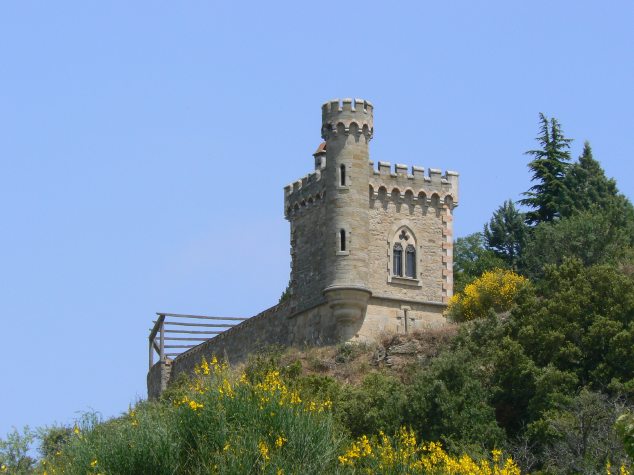
Tour Magdala à Rennes-le-Chteau
Cliquer sur l'image pour obtenir un agrandissement
— Document personnel — pas de copyright — Juin 2006 —
|
|
|
|
|
|
Rispondi |
Messaggio 11 di 48 di questo argomento |
|
|
|
|
Rispondi |
Messaggio 12 di 48 di questo argomento |
|
|
LA TORRE DE BABEL, OSEA LA UNION ENTRE EL CIELO Y LA TIERRA, ES UN "AGUJERO DE GUSANO". EN ESTE MARCO ES EL GRIAL MISMO. SIMBOLIZA LA UNION ENTRE EL CIELO Y LA TIERRA, O LA CUADRATURA DEL CIRCULO (CIRCULO=CIELO; CUADRADO=TIERRA) O LA ESCUADRA Y EL COMPAS MASONICO. ES OBVIA LA CONNOTACION CON LA "ESCALERA DE JACOB". MAGDALENA TIENE CONNOTACION CON EL MISMO TERMINO TORRE EN HEBREO.
1. Josué 15:37 Zenán, HADASA, Migdal-gad,
2. Ester 2:7 Y había criado a HADASA, es decir, Ester, hija de su tío, porque era húerfana; y la joven era de hermosa figura y de buen parecer. Cuando su padre y su madre murieron, Mardoqueo la adoptó como hija suya.
ESTHER=ISHTAR=STAR GATE=PUERTA ESTELAR
BABEL=PUERTA DE DIOS
1 Pedro 5:13: La iglesia que está en Babilonia, elegida juntamente con vosotros, y Marcos mi HIJO, os saludan.
HECHOS 12:12 / 33 / JUAN MARCOS
ESTRELLA DE 6 PUNTAS = 33 = 2 TRIANGULOS CRUZADOS =ALQUIMIA
BABILONIA ESTABA EN EL PARALELO 33 Y ERA UNA CIUDAD DE 7 COLINAS.
BABEL/ BABY / BEBE /
| milky way in Simple Gematria Equals: 119 |
( |
m 13 |
i9 |
l 12 |
k 11 |
y 25 |
0 |
w 23 |
a1 |
y 25 |
) |
| queen mary in Simple Gematria Equals: 119 |
( |
q 17 |
u 21 |
e5 |
e5 |
n 14 |
0 |
m 13 |
a1 |
r 18 |
y 25 |
|
| hebrew calendar in Simple Gematria Equals: 119 |
( |
h8 |
e5 |
b2 |
r 18 |
e5 |
w 23 |
0 |
c3 |
a1 |
l 12 |
e5 |
n 14 |
d4 |
a1 |
r 18 |
| mary magdalene in Simple Gematria Equals: 119 |
( |
m 13 |
a1 |
r 18 |
y 25 |
0 |
m 13 |
a1 |
g7 |
d4 |
a1 |
l 12 |
e5 |
n 14 |
e5 |
|
|
|
|
|
|
Rispondi |
Messaggio 13 di 48 di questo argomento |
|
1. Génesis 28:12 Y soñó: y he aquí una ESCALERA que estaba apoyada en tierra, y su extremo tocaba en el cielo; y he aquí ángeles de Dios que subían y descendían por ella.
2. 1 Reyes 6:8 La puerta del aposento de en medio estaba al lado derecho de la casa; y se subía por una ESCALERA de caracol al de en medio, y del aposento de en medio al tercero.
| Reply |
Message 10 of 10 on the subject |
|
ESCRITO II CONOCIMIENTO.- LA TORRE MAGDALA
Un pequeño paseo por los jardines aledaños a la iglesia de
Rennes-le-Chteau nos llevó hasta situarnos frente a una torre
amurallada, que según nos contaba un vecino del lugar, fue
ordenada construir a finales del siglo XIX por el mismo sacerdote
que mandó restaurar la iglesia, Torre Magdala la llamó.
Se podía visitar, por lo tanto, decidimos entrar en ella. Denotaba
ser un lugar de estudio y recogimiento. Sobrio, con unas librerías
que aún conservaban algunos ejemplares en sus estantes, pero que al parecer no eran los que originalmente habían sido consultados por el sacerdote.
Una escalera de caracol nos trasladó a una segunda planta, una
amplia terraza desde donde contemplamos toda la comarca. Nos
quedamos ensimismados con el paisaje. Desde este punto la
Tierra nos hacía sentir lo infinitamente pequeños que somos, unas
simples criaturas del universo rodeadas de una naturaleza que nos
invita a fundirnos en ella.
Los gorriones vestidos como antiguos monjes mendicantes
alabando con su piar a la vida; los viñedos amamantándose de la
tierra, prestos a ofrecernos su jugo en unos meses; los árboles
incitándonos a elevarnos junto a ellos hasta el cielo.
Nuestras almas se sentían unidas con el entorno…
Un leve susurro y... la Madre Tierra comenzó a hablarnos:
«Como veis, mis pequeños — una dulce y suave Voz femenina
parecía salir tanto del entorno como de nuestro interior—, no me
presento bajo el manto de una virgen como hice en otro tiempo.
Me estáis viendo a través de vuestros ojos, contempláis mi ropaje
en la naturaleza que os rodea y, sobre todo, me sentís en la
profundidad de vuestro ser.
Cerrad los ojos y percibiréis una llama que arde en vosotros, que
asciende desde mi esencia, desde lo más profundo de esta tierra,
su núcleo, que sube por vuestra columna alumbrándoos en la
oscuridad de vuestras noches. Una llama que crece día a día a
través de las edades y que hoy a vosotros, a todos mis pequeños,
está permitiendo que os sintáis más y más unidos, no sólo unos
hermanos con otros, sino con todos mis hijos. Sí, con los que
llamáis animales irracionales, con los árboles y demás plantas que
pueblan este planeta, con los minerales que creéis inertes y con
aquellos seres aún invisibles a vuestros ojos.
Todo está vivo en mí, y está llegando el momento en que yo
también despierto de mi ensueño.
Un amanecer nuevo, una nueva era comienza y aunque algunas
heridas tengo en mi cuerpo, nada podrá impedir que éste crezca.
Vosotros me ayudaréis a sanarlas al igual que yo ayudo a sanar
las vuestras.»
Un breve silencio colmó el lugar y la Voz femenina continuó:
«No os dejéis llevar por el desaliento quedándoos sólo con el
acontecer superficial ya que es necesario que se produzcan
algunos cambios, pero nada que os haga pensar que la vida aquí
desaparecerá. Haced oídos sordos a quienes anuncian un final
apocalíptico, pues éstos solamente viven y sienten bajo el antiguo
sistema del temor… Un sistema que tiene el tiempo contado.
Mi llama arde cada vez con más poder, está ascendiendo y me
elevará a mí con todas mis criaturas. Yo os protejo, pero ya es
llegado el momento en que seáis dueños de vuestro propio
destino. Aunque sigáis viviendo en el seno materno conoceréis
que la vida trasciende los límites de mi cuerpo.
Desde hace millones de años mis “hermanas” y yo
intercambiamos la vida que nos habita, que somos, al igual que en
vosotros vuestras células se intercambian de unos a otros. Nada
habéis de temer, pues lo iréis experimentando según vuestra
capacidad de entendimiento.
Todo en el universo es comunión, no hay nada que viva aislado,
esto sólo es producto del estado mental en que os sumisteis y del
que estáis, estamos, emergiendo.
Estamos ahora viviendo en una comunión cada vez mayor.
Así, como tenéis una Madre y un Padre que se manifiesta ante y
en vosotros, hay un modelo de Hija-Hijo, un ideal que está
grabado a fuego en vosotros y que se manifiesta a través de las
edades. Según crecéis, maduráis, le sentís cada vez más próximo,
está en vuestros genes. La presencia de mi Hijo manifestada hace
dos mil años volverá a vosotros para que crezcáis con Él y en Él
en una nueva conciencia más incluyente, más amorosa y
comprensiva de la Vida. Su presencia es sentida en el corazón de
muchos de vosotros y cada día lo será aún más. Su comunión es
vivida y conocida en quienes mi llama asciende y ha ascendido
hasta fundirse en ellos con el Cielo.
No veáis a mi Hijo independiente de vosotros, ajeno a vuestras
vidas, como un ser lejano e inalcanzable. No penséis que Él sólo
vendrá desde el exterior, olvidad esa visión infantil. Le
contemplaréis en vosotros y os mostrará un rostro sin igual, un
semblante que señalará el primer paso del siguiente peldaño de la
humanidad donde se funden el día y la noche. Un rostro que será
el vuestro y que… no olvidaréis.
Mi Hijo sois todos.
El Cielo y la Tierra se unen cada día un poco más.
Yo, vuestra Madre, estoy en vosotros al igual que vuestro Padre
lo está.
Mis pequeños… ¡Ascended conmigo!
¡Soy el Amor!»
Y la Voz cesó.
Una fina lluvia empezó a deslizarse sobre nuestros cuerpos,
sentimos su frescura penetrando como un bálsamo nuestras almas.
El cielo no distingue y a todos nos impregna por igual con su
savia.
Nos miramos y salimos de la Torre Magdala caminando sin
prisas, empapados de Vida. Un rosal lucía sus mejores galas, sus
flores con sus pétalos escarlatas al igual que llamas vivas
destacaban en el jardín, recordándonos que aún hay mucho
trabajo por hacer hasta que la llama de la Vida se instale en todos
los corazones.
http://rosacastillobcn.blogspot.com.ar/2015_03_17_archive.html
|
|
|
|
|
|
Rispondi |
Messaggio 14 di 48 di questo argomento |
|
|
|
|
Rispondi |
Messaggio 15 di 48 di questo argomento |
|

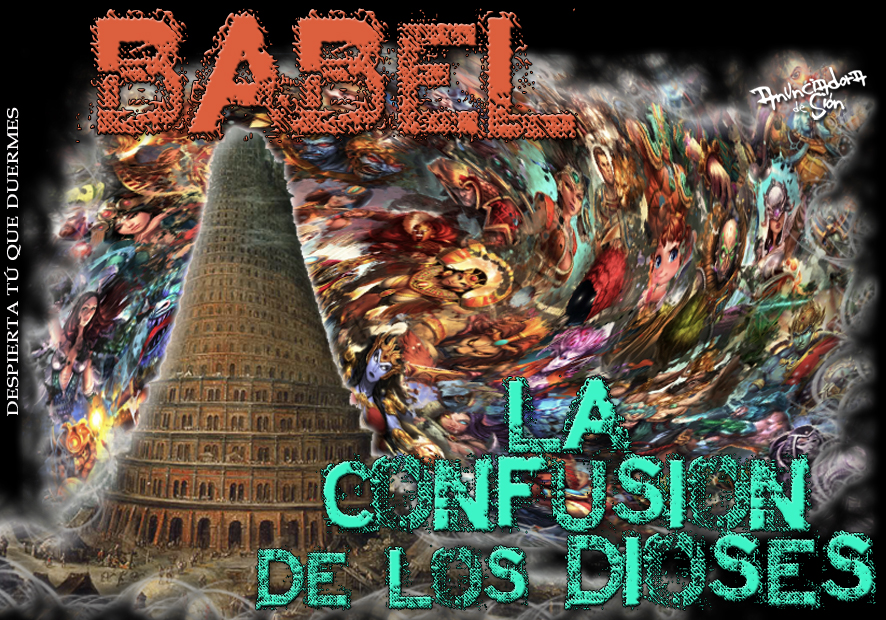   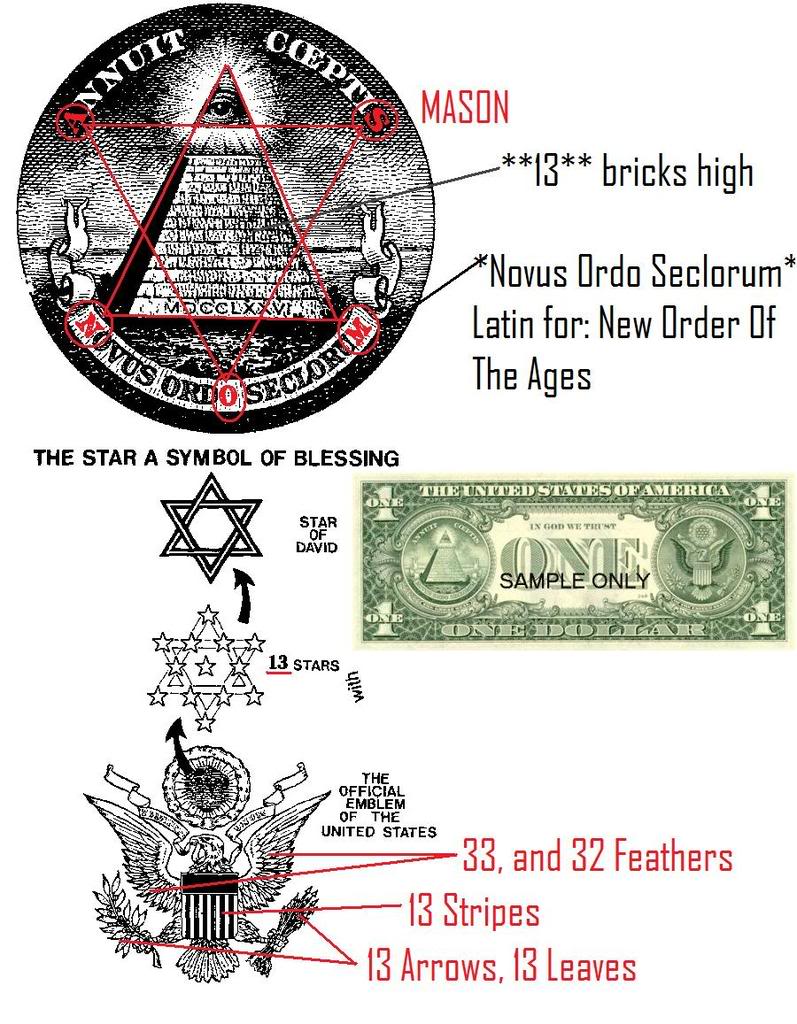 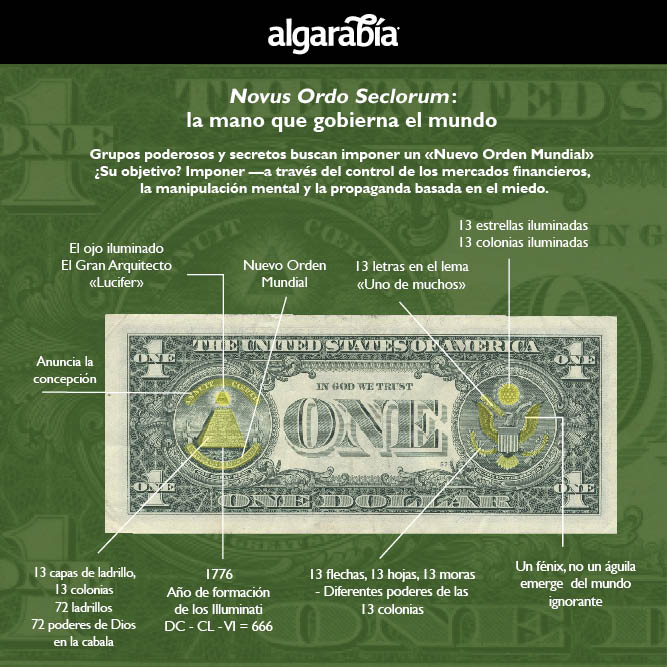
Statue of Liberty
The height of the Statue of Liberty is 111′-1″ from bottom of foot to top of head. The 7 rays on the crown and the 11 points of the base star echo the proportions of the Great Pyramid’s 7:11 height to base proportion. The superb book Talisman by Graham Hancock and Robert Bauval convincingly shows this goddess is actually the Egyptian Isis.
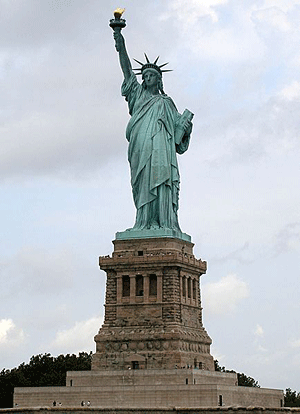
Image courtesy Elcobbola under the Creative Commons Attribution-Share Alike 3.0 Unported license.
http://www.viewzone.com/onstott66.html

MONTSEGUR VOLCAN/CAN / TEOTIHUACAN / VATICANO / CANA/ AMERICAN/ MEXICAN/ CAN MAYOR (SIRIO)- BODAS DE CANA
Location
Montségur is in the Ariege, in the foothills of the Pyrenees, not far from Lavelanet, due South from Mirepoix.
Montségur lies at 42°52'35" N, 1°49'51" E on a pog (a volcanic pluton) at an altitude of 1,207 meters. The castle is owned by the Commune of Montségur. There is an entrance fee, which also covers entry to a museum in the nearby town.
Guided Tours
Cathar Castle Tours
Mairie: mairie.montsegur@wanadoo.fr
Tel: 05 61 0110 27
Tourist Information Office:
Tel: 05 61 03 03 03


|
|
aerial view of Montségur
|
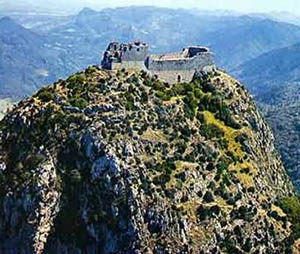 |
|
MARIA MAGDALENA EN EL CATARISMO (CATAROS)
25 DE ABRIL=DIA DE SAN MARCOS
22 DE JULIO=DIA DE MARIA LA MAGDALENA
MASON FRANCES
|
|
|
|
Rispondi |
Messaggio 16 di 48 di questo argomento |
|


Sabemos que Vesica Piscis esta en funcion al a los 153 peces de Juan 21:11.
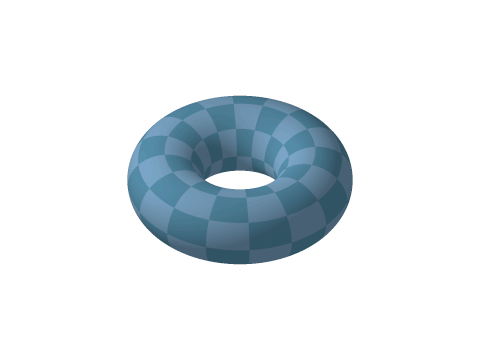 Aqui tenemos a Pi - la circunferencia del toro y la vesica piscis 256/153 equivalente a la raiz cuadrada de 3 En el hipercubo las coordinadas binarias de Piscis son decimal 3 y binario 11 153 los pescados de Jesus en la biblia    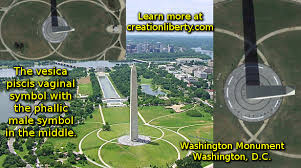  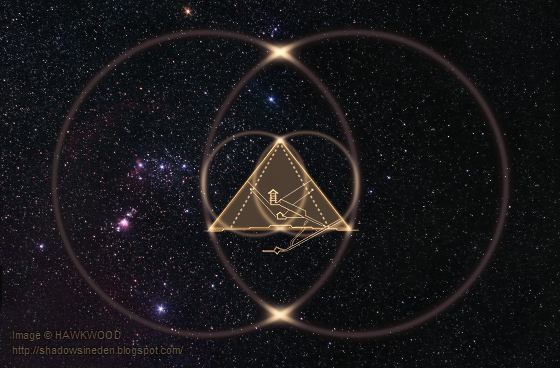 
I have a lot to say about pythagorean triangles in my videos. In particular I have found many references to 5:12:13 triangles and 5:12 rectangles (that’s 2 of the triangles put together) in Stonehenge and the whole region surrounding it, in Washington DC, Paris, and Jerusalem. Someone who listened to my first Red Ice interview contacted me with a major discovery he made in regards to the 5:12 proportion. Brace yourself…

A rectangle measuring 5 feet by 12 feet has an area of 8640 square inches. This is something I can work with. I’m never going to be able to build an 864 foot solar Osiris talisman on a geodetic hot spot, but I think I can manage making a few raised garden beds measuring exactly 5 by 12 feet. And where I live in Canada (above 50 degrees North) can really use more resonance with the Sun.
If you saw SIPS Volume 1, you might recall that Stonehenge has its station stones which describe a 5×12 rectangle.

from SIPS Volume 1
Stonehenge is also 33.33° from Solomon’s Temple.

Sapientia Aedificavit Sibi Domum. Es decir, "la sabiduría ha edificado aquí su casa". Resulta curioso que la misma frase aparece en el Evangelio de María Magdalena, un texto apócrifo. Se dice que en el interior de esta iglesia y de otras muchas de Venecia está escondido el tesoro de los templarios. Pero no hay ninguna prueba de ello. Para terminar ya con esta entrada me gustaría que nos acercásemos un momento a uno de los edificios más emblemáticos de Venecia: el Palacio Ducal.
|
|
|
|
Rispondi |
Messaggio 17 di 48 di questo argomento |
|
|
|
|
Rispondi |
Messaggio 18 di 48 di questo argomento |
|
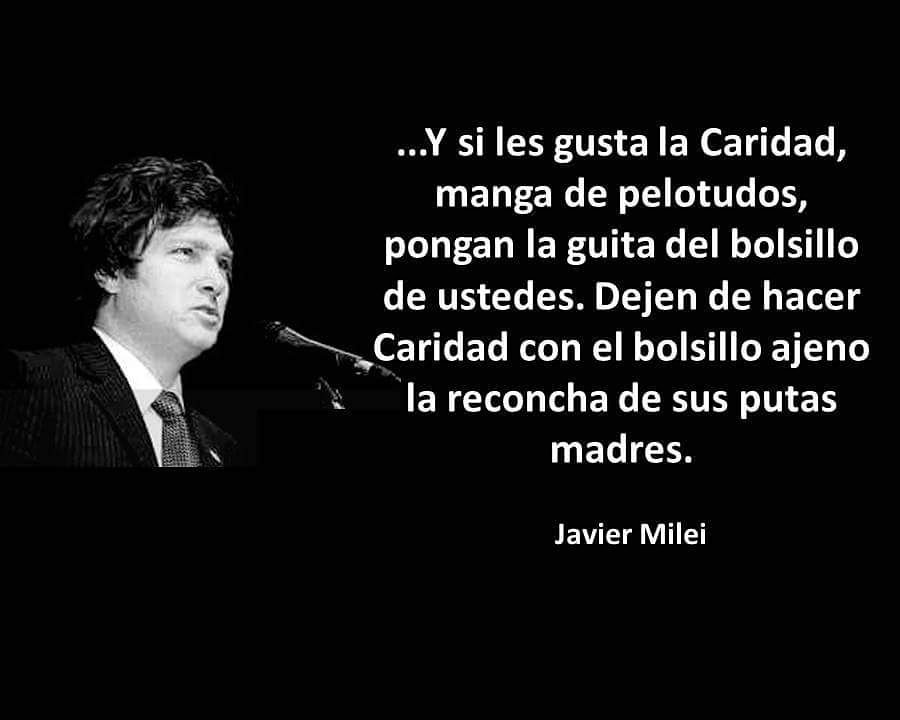
SIRIO ES LA CONSTELACION DEL PERRO/ CAN MAYOR
Nebulosa Cabeza de Caballo
De Wikipedia, la enciclopedia libre
| Nebulosa Cabeza de Caballo |
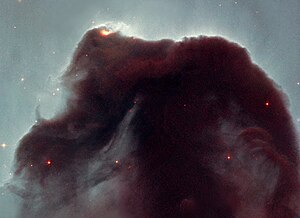 |
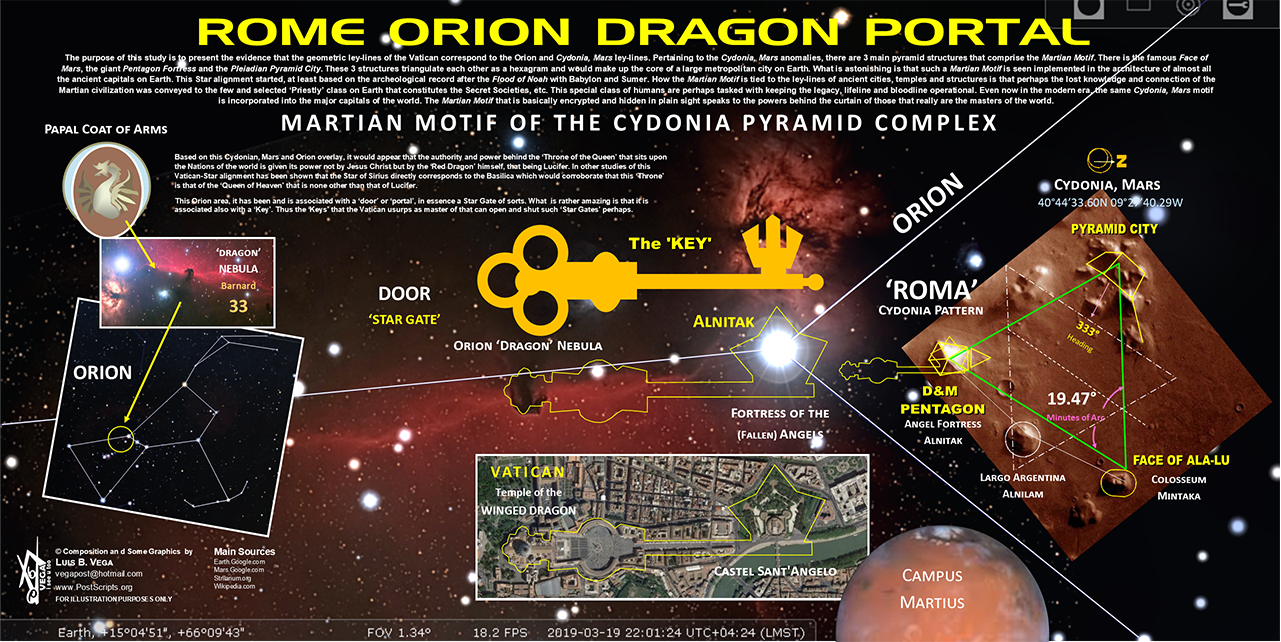
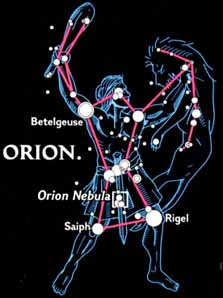
Statue of Liberty
The height of the Statue of Liberty is 111′-1″ from bottom of foot to top of head. The 7 rays on the crown and the 11 points of the base star echo the proportions of the Great Pyramid’s 7:11 height to base proportion. The superb book Talisman by Graham Hancock and Robert Bauval convincingly shows this goddess is actually the Egyptian Isis.

Image courtesy Elcobbola under the Creative Commons Attribution-Share Alike 3.0 Unported license.
http://www.viewzone.com/onstott66.html


hace 3 días - Manipularon la historia a través de las fuentes de los textos en su lenguaje inventado llamado Latín, peeeeero no pudieron cambiar el ... Jose Alfonso Hernando ... la famosa batalla de Troya, y HASTA AHÍ NOS VAMOS PARA VER QUE ... “Las matemáticas nos hacen más libres y menos manipulables”.
hace 3 días - Principal / Valdeande Magico / ¡¡¡ Visitamos TROYES, donde fue la Guerra de Troya !!! ¡¡¡ Visitamos TROYES, donde fue la Guerra de Troya !!!
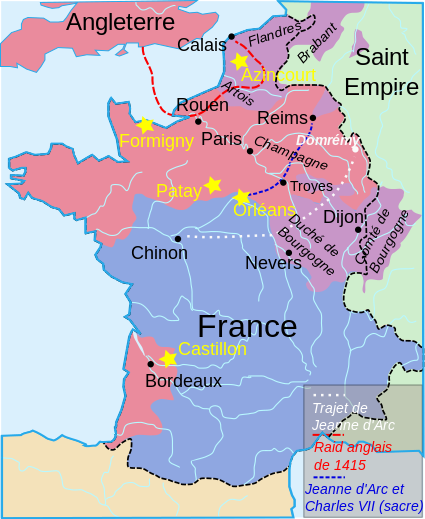

Troyes is the former capital of Champagne and is a perfect short trip visit from Paris. At just an hour and a half by train it can be a day trip but a couple of days and an overnight stay would be better because there’s so much to see and do in this lovely, vibrant city.
A town that is shaped like a Champagne cork in Champagne?
Troyes is an ancient city, once a Roman town with a direct road from Milan and onwards to Boulogne-sur-Mer on the Opal Coast in the north of France – the route for the invasion of Britain. Later the rich and powerful Counts of Champagne built a palace in Troyes and it was a prosperous place that attracted merchants from all over Europe. The counts fortified their town and though at that time Champagne didn’t even exist, the walls took the form of a Champagne cork.
Following a huge fire in 1524 that destroyed many of the ancient buildings that were constructed from wood, new brick buildings were erected and many of them remain to this day. Indeed the inhabitants of Troyes lived in these buildings pretty much as they had been for hundreds of years right up until the 1950s. It was a decade when the town council went on a bit of a renovation rampage to improve conditions since many of the old buildings had no bathrooms and poor hygiene conditions.
Fortunately they didn’t destroy too much and visiting Troyes is like stepping back in time. Every street seems to have its quota of half-timbered houses and there are cobbled streets and tiny alleyways that create a mesmerising maze in the centre of the old town of Troyes. In the little ruelle des Chats (Cats Alley) you’ll see it is so narrow that the houses lean in and touch via a central gutter at the top and cats could cross from houses on both sides of the roads. At the side of the office of the Mutuelle Societe at 111 rue Emile Zola you can enter a gate and at the back you’ll discover a stunning renaissance house looking exactly as it did when it was built. At the Cour du Mortier d’or, the ancient timber frames still bear the workman’s trademarks.
Everywhere you go here you’ll discover traces of history from hundreds of years ago, quaint, quirky and irresistibly charming…
Read the rest of this story in our free magazine – click here to go straight to it!
|
|
|
 Primo Primo
 Precedente
4 a 18 de 48
Successivo Precedente
4 a 18 de 48
Successivo Ultimo
Ultimo
|
|
| |
|
|
©2025 - Gabitos - Tutti i diritti riservati | |
|
|

